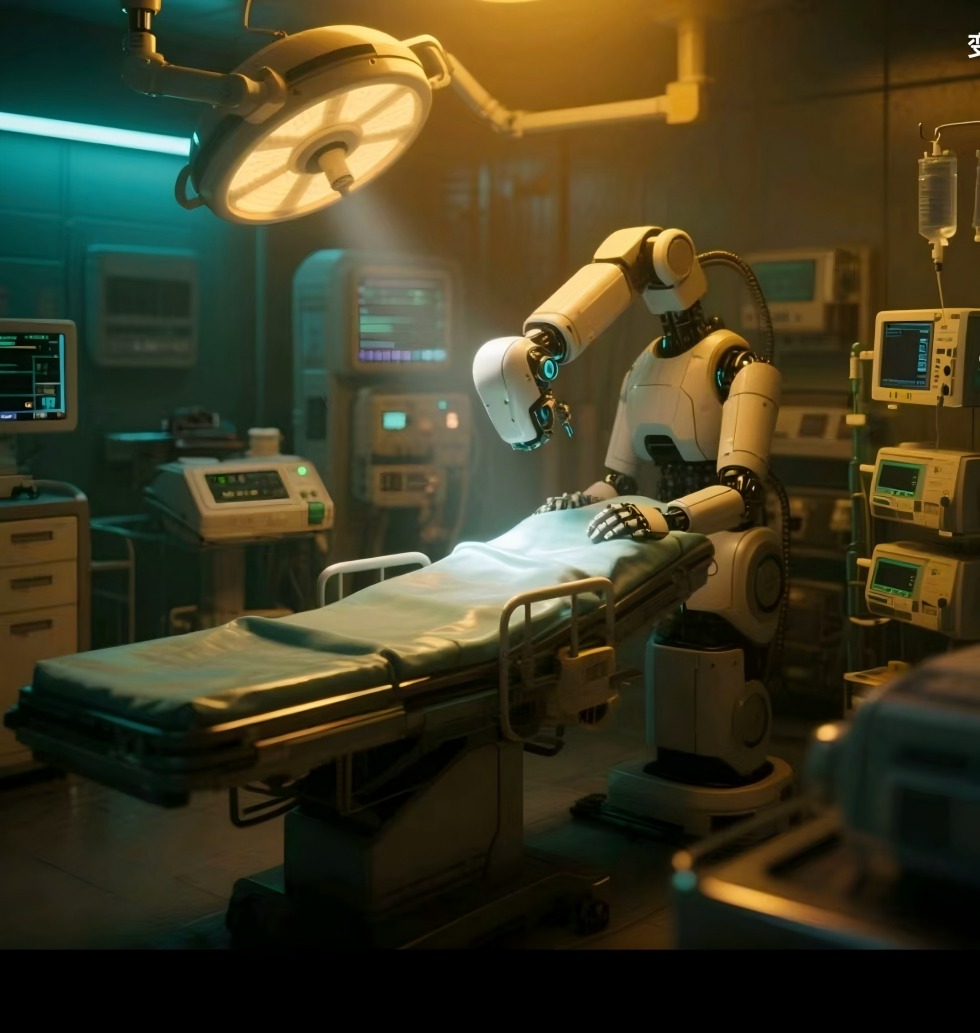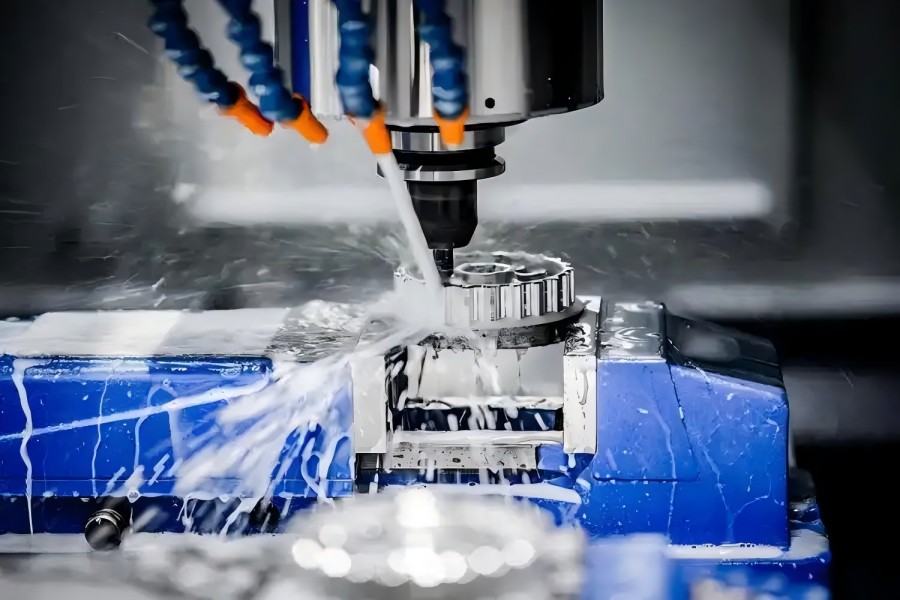News Categories
Contact Us
020-86988980
- Guangzhou Sinoth Import and Export Co., LTD
Tel: 020-8968-8980
Website:www.gzsynoth.com
Email: belinda@dginfa.com(24 hours online)
Phone: +86 189 2740 6786
Address: No 5, Jinshi Three Street, Shiling Town, Huadu District,Guangzhou City, Guangdong Province
News
Current Location:Home > News > Industry information
Why Choose CNC Precision Machining for Custom Surgical Robots?
Add Time:2025-07-10
Surgical robots represent the pinnacle of medical technology, enabling surgeons to perform intricate procedures with unparalleled precision, minimal invasiveness, and improved patient outcomes. At the core of these advanced systems lies a network of custom components-from tiny gears and sensors to complex articulating arms-each requiring microscopic accuracy. CNC (Computer Numerical Control) precision machining has emerged as the gold standard for manufacturing these critical parts. Here’s why it stands out as the optimal choice for custom surgical robot production:

First. Unmatched Precision for Life-Critical Components
Surgical robots operate in environments where even a fraction of a millimeter can impact patient safety. CNC machining delivers tolerances as tight as +/-0.001mm, ensuring components like joint housings, tool changers, and sensor mounts fit and function flawlessly. This precision eliminates play in moving parts, reduces vibration during procedures, and guarantees consistent performance-critical for tasks like laparoscopic surgery or neurosurgical interventions.
Second. Flexibility for Complex, Custom Designs
Surgical robots are rarely one-size-fits-all; they are often tailored to specific procedures (e.g., orthopedics, robotics-assisted laparoscopy) or patient populations. CNC machining thrives in producing custom, complex geometries-from intricate cavities in instrument shafts to threaded interfaces for modular tools. Unlike traditional manufacturing methods, CNC systems can execute 3D designs with curved surfaces, undercuts, and micro-features, allowing engineers to iterate quickly on prototypes and scale to production without sacrificing accuracy.
Third. Compatibility with Medical-Grade Materials
Surgical robot components must meet strict biocompatibility, corrosion resistance, and sterility standards. CNC machining excels with materials like:
- Titanium alloys: Lightweight, strong, and biocompatible, ideal for robot arms and structural parts.
- Stainless steel (316L): Resistant to bodily fluids and easy to sterilize, perfect for instrument tips.
- PEEK: A high-performance polymer with low friction, used in moving joints.
CNC processes minimize material waste and ensure clean, burr-free finishes-eliminating risks of contamination or tissue damage during surgery.
Fourth. Consistency and Scalability
In medical manufacturing, consistency is non-negotiable. CNC machining uses programmed instructions to replicate parts with near-identical precision across batches, reducing variability. Whether producing 10 prototypes or 1,000 production units, CNC systems maintain tight quality control, ensuring each component meets FDA, ISO 13485, and CE medical device standards.
Fifth. Speed to Market
The medical technology landscape evolves rapidly, and delays in component production can hinder innovation. CNC machining offers fast turnaround times, with many shops capable of producing prototypes in days. This agility accelerates the design-test-refine cycle, helping manufacturers bring cutting-edge surgical robots to market faster.
In summary, CNC precision machining combines unrivaled accuracy, flexibility, and material compatibility-making it indispensable for crafting the custom components that power next-generation surgical robots. For medical device companies, it's not just a manufacturing choice; it's a commitment to safety, reliability, and advancing patient care.

First. Unmatched Precision for Life-Critical Components
Surgical robots operate in environments where even a fraction of a millimeter can impact patient safety. CNC machining delivers tolerances as tight as +/-0.001mm, ensuring components like joint housings, tool changers, and sensor mounts fit and function flawlessly. This precision eliminates play in moving parts, reduces vibration during procedures, and guarantees consistent performance-critical for tasks like laparoscopic surgery or neurosurgical interventions.
Second. Flexibility for Complex, Custom Designs
Surgical robots are rarely one-size-fits-all; they are often tailored to specific procedures (e.g., orthopedics, robotics-assisted laparoscopy) or patient populations. CNC machining thrives in producing custom, complex geometries-from intricate cavities in instrument shafts to threaded interfaces for modular tools. Unlike traditional manufacturing methods, CNC systems can execute 3D designs with curved surfaces, undercuts, and micro-features, allowing engineers to iterate quickly on prototypes and scale to production without sacrificing accuracy.
Third. Compatibility with Medical-Grade Materials
Surgical robot components must meet strict biocompatibility, corrosion resistance, and sterility standards. CNC machining excels with materials like:
- Titanium alloys: Lightweight, strong, and biocompatible, ideal for robot arms and structural parts.
- Stainless steel (316L): Resistant to bodily fluids and easy to sterilize, perfect for instrument tips.
- PEEK: A high-performance polymer with low friction, used in moving joints.
CNC processes minimize material waste and ensure clean, burr-free finishes-eliminating risks of contamination or tissue damage during surgery.
Fourth. Consistency and Scalability
In medical manufacturing, consistency is non-negotiable. CNC machining uses programmed instructions to replicate parts with near-identical precision across batches, reducing variability. Whether producing 10 prototypes or 1,000 production units, CNC systems maintain tight quality control, ensuring each component meets FDA, ISO 13485, and CE medical device standards.
Fifth. Speed to Market
The medical technology landscape evolves rapidly, and delays in component production can hinder innovation. CNC machining offers fast turnaround times, with many shops capable of producing prototypes in days. This agility accelerates the design-test-refine cycle, helping manufacturers bring cutting-edge surgical robots to market faster.
In summary, CNC precision machining combines unrivaled accuracy, flexibility, and material compatibility-making it indispensable for crafting the custom components that power next-generation surgical robots. For medical device companies, it's not just a manufacturing choice; it's a commitment to safety, reliability, and advancing patient care.



